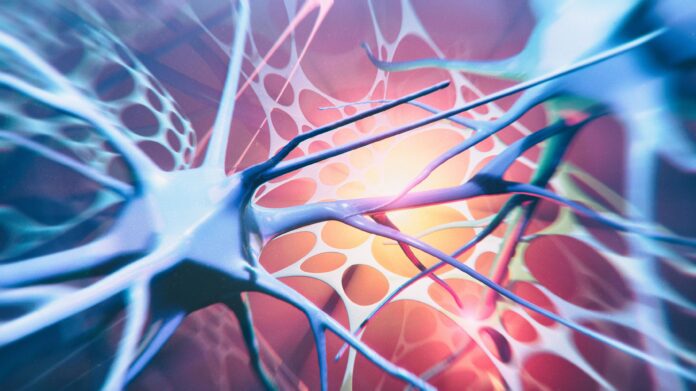Science
Study Reveals Theta Waves Influence Working Memory in Primates

Research from the Picower Institute for Learning and Memory at the Massachusetts Institute of Technology (MIT) has discovered that working memory in non-human primates is influenced by theta brain waves, specifically those within the frequency range of 3–6 Hz. This study, published in the journal Neuron, highlights how these brain waves assist in detecting subtle environmental changes, shedding light on both the capabilities and limitations of visual working memory.
According to the findings, the theta waves scan across a specific region of the cortex that corresponds to the field of view. The research, led by Earl Miller, PhD, a professor of neuroscience and the corresponding author of the study, builds on previous work indicating that the brain utilizes waves of varying frequencies to perform complex cognitive tasks. Miller stated, “It shows that waves impact performance as they sweep across the surface of the cortex. This raises the possibility that traveling waves are organizing or even performing neural computation.”
Experimental Design and Key Findings
To assess the impact of theta waves on memory performance, non-human primates participated in a video game involving an array of colored squares. The squares briefly appeared on a screen before disappearing, only to reappear after a short delay, with one square changing color. The primates needed to identify the altered square as quickly as possible. Researchers meticulously tracked the reaction times and gaze positions of the animals while measuring brain wave power across a wide frequency spectrum as well as individual neural spikes in the frontal eye fields.
This area of the brain is essential for visual processing and is structured similarly to a retinotopic map, mirroring how visual information is initially captured by the retina. The study revealed that the accuracy and speed of the primates’ responses were contingent on the phase of the theta brain wave at the moment the altered square reappeared. Notably, each position on the screen had an optimal phase of the theta wave that correlated with peak performance. The results indicated that the lower a target square was located, the later the phase of the theta wave associated with maximum accuracy.
Miller’s laboratory has previously shown that other brain waves, specifically alpha and beta frequencies (approximately 8-25 Hz), play significant roles in task comprehension and in regulating when faster gamma waves (above 30 Hz) can be utilized to encode sensory data. In this study, theta waves appeared to mediate the interactions between beta and gamma waves. During the excitatory phase of theta, beta activity was suppressed, leading to increased neural spiking in response to visual information. Conversely, during the inhibitory phase, beta power surged while neural spiking activity diminished.
Implications and Future Research
The implications of these findings extend beyond basic neuroscience. Miller’s team is currently exploring the development of closed-loop analog feedback systems aimed at enhancing the effectiveness of brain waves at different frequencies for potential clinical applications. This innovative approach may pave the way for new strategies in treating cognitive impairments and optimizing brain function.
In summary, this research not only advances our understanding of the mechanisms behind visual working memory in non-human primates but also opens avenues for further exploration of brain wave dynamics and their potential therapeutic uses. The study underscores the complexity of cognitive processes and the intricate role that theta waves play in shaping memory performance.
-

 Science2 months ago
Science2 months agoInventor Achieves Breakthrough with 2 Billion FPS Laser Video
-

 Health2 months ago
Health2 months agoCommunity Unites for 7th Annual Into the Light Walk for Mental Health
-

 Top Stories2 months ago
Top Stories2 months agoCharlie Sheen’s New Romance: ‘Glowing’ with Younger Partner
-

 Entertainment2 months ago
Entertainment2 months agoDua Lipa Aces GCSE Spanish, Sparks Super Bowl Buzz with Fans
-

 Health2 months ago
Health2 months agoCurium Group, PeptiDream, and PDRadiopharma Launch Key Cancer Trial
-

 Top Stories2 months ago
Top Stories2 months agoFormer Mozilla CMO Launches AI-Driven Cannabis Cocktail Brand Fast
-

 Entertainment2 months ago
Entertainment2 months agoMother Fights to Reunite with Children After Kidnapping in New Drama
-

 World2 months ago
World2 months agoIsrael Reopens Rafah Crossing After Hostage Remains Returned
-

 Business2 months ago
Business2 months agoTyler Technologies Set to Reveal Q3 Earnings on October 22
-

 World2 months ago
World2 months agoR&B Icon D’Angelo Dies at 51, Leaving Lasting Legacy
-

 Health2 months ago
Health2 months agoNorth Carolina’s Biotech Boom: Billions in New Investments
-

 Health2 months ago
Health2 months agoYouTube Launches New Mental Health Tools for Teen Users









